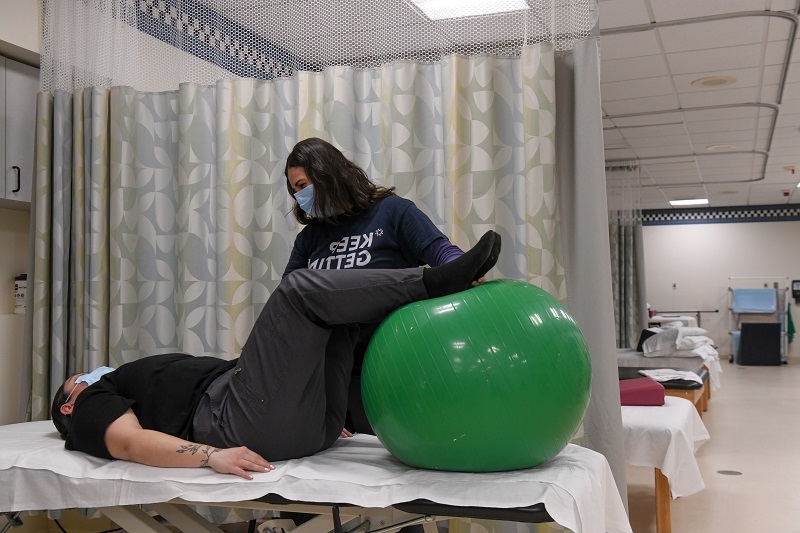How to Ease Into Exercise After a Joint Replacement

August 03, 2023
Joint replacements, where damaged joints are replaced with artificial ones, can sometimes entail lengthy recovery times. Physical therapy and exercise are the key components to a successful recovery.
“Surgery can be exhausting and affect balance, both of which may hinder the desire to begin a post-op exercise regimen, especially for patients who had not done much exercise due to their joint pain,” shares orthopedic surgeon, Harlan B. Levine, M.D. “However, these are all the more reasons to begin exercising because joint rebuilding and overall health can only improve from here.”
Exercises to Try After Joint Replacement
Regular exercise can aid in recovery by increasing mobility and restoring strength. Building muscles around the new joint is essential to recovery, and this can be done with a combination of physical therapy and exercise.
“The proper exercise regimen should include activity for balance, strength and flexibility, and these activities must be targeted to affect the joint,” adds Dr. Levine.
Timing
- In the first few weeks, any type of cardiovascular activity may be difficult, and assistance likely will be needed.
- After about six weeks, however, slightly more intense aerobic activity can begin.
Aerobic Activity
Aerobic activities should increase heart rate; some good options include:
- Walking
- Biking
- Swimming
- Using an elliptical machine
If balance and stability are issues, trekking poles can be used to assist with cardio activity.
Strength Training
Following a joint replacement, strength activities should target the:
- quadriceps (the four muscles in the front of the thigh)
- gluteals (three muscles in the buttocks)
- hip abductors (muscles that allow the thigh to move to the side).
These exercises include straight leg raises, ankle pumps, knee straightening and knee bends. Hamstring and heel cord stretches are useful exercises to do to improve flexibility and balance.
Some exercises, such as swimming, dance and yoga activities, encompass aerobic, flexibility, strength, and balance activities. These exercises can be fun and may be a good choice for people who don’t love traditional exercise.
Safety Considerations Post Joint Replacement
Running is not recommended until one is fully recovered from joint replacement. Generally, a doctor or physical therapist should be consulted before attempting high-impact activity; modifications may be able to be made based on a health professional’s judgment and expertise.
If there is any pain or swelling after exercise, such as in the knee or hip, the affected body part should be iced and elevated.
“Physical therapy is a vital component of recovery, along with exercise. If you’re unsure of what activities are appropriate for you, your physical therapist can help guide an appropriate exercise plan for your body,” says Dr. Levine.
Next Steps & Resources:
- Our source: Harlan B. Levine, M.D.
- To make an appointment with Dr. Levine or an orthopedic expert near you, call 800-822-8905 or visit our website.
- Learn more about orthopedics at Hackensack Meridian Health.
The material provided through HealthU is intended to be used as general information only and should not replace the advice of your physician. Always consult your physician for individual care.






